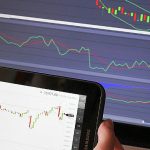KPI of the Day – Investment: # Put-call ratio

Definition
Compares the trading volume of put options to the trading volume of call options.
A put is an option contract that gives the owner the right, but not the obligation, to sell (stocks, currency) at a specified time and price, whereas a call option gives the owner the right, but not the obligation to buy at a specified time and price.
Purpose
To help identify opportunities in the spot market.
Recommendations
The # Put-call ratio is rather a barometer for spirited investment decisions. In the finance industry, having a tool that dictates the right time for making smart investment decisions is important, and the # Put-call ratio does just that. By reflecting on unusual volumes of trade, it points out to the stock with the highest prospect of yielding valuable returns for the company’s investors.
By regularly monitoring the # Put-call ratio, financial advisors can detect and even predict sudden shifts in market sentiment that help them decide to buy or sell stock.
The method is particular popular with Forex traders and directional bets, since predicting market direction is challenging, and instinct has always been the main characteristic of on the job professionals in the industry. Traders will commonly buy when the # Put-call ratio stands above one, and they will sell when the # Put-call ratio is below 1.
This is because a # Put-call ratio above 1 reflects on stock prices going down, while a # Put-call ratio below 1 signals a lack of balance from the buy side. The # Put-call ratio may also provide a solution to investors seeking more accessible financial products. Financiers can, therefore, apply the basics of puts and calls in designing less risky and volatile financial products that they can offer to the market.
It is important for this KPI to be constantly monitored, if positive results are desired to be obtained. The higher the put-call ratio, the more pervasive the bearishness and thus, the greater the likelihood that the market will turn higher. On the flip side, a low put-call ratio suggests an overabundance of bullishness and provides an early warning of a possible downturn.
The ratio of put (sell) to call (buy) options is normally about 0.60, indicating fewer traders of put options than call options. When the ratio gets up to 0.65, to 0.70 or higher, it indicates increasing pessimism by option traders and it suggests a buy signal. When the ratio goes down to 0.40, decreasing pessimism, it may indicate that it is time to sell.
Image source:

Tags: Investments, KPI





